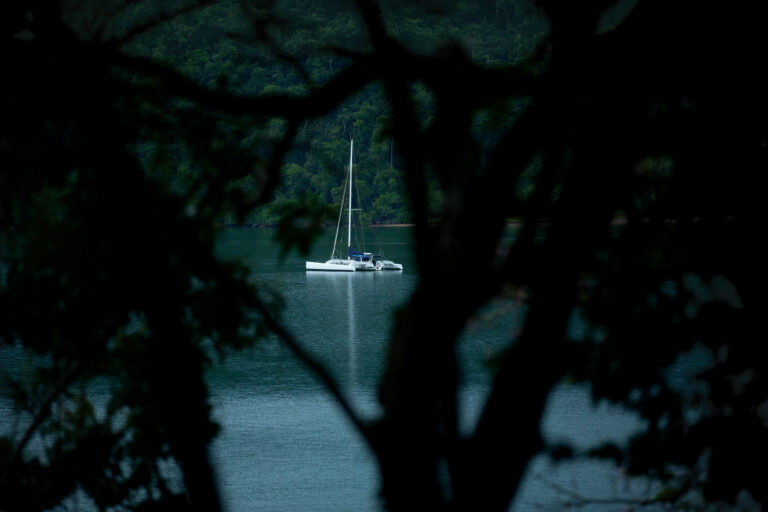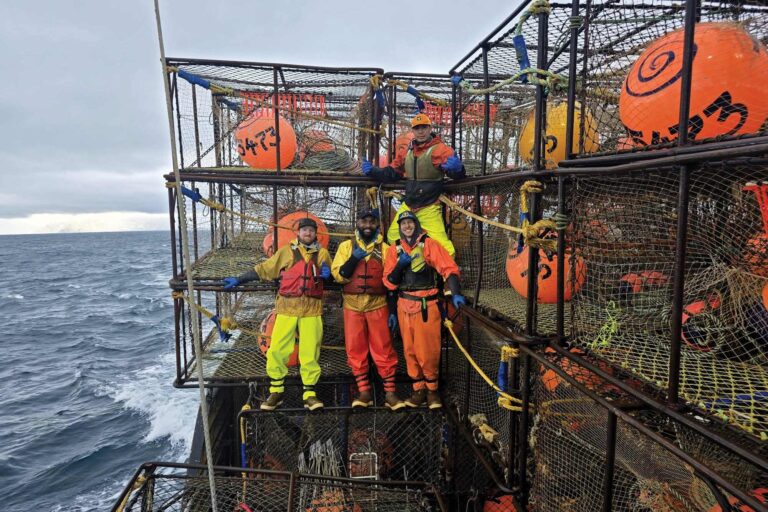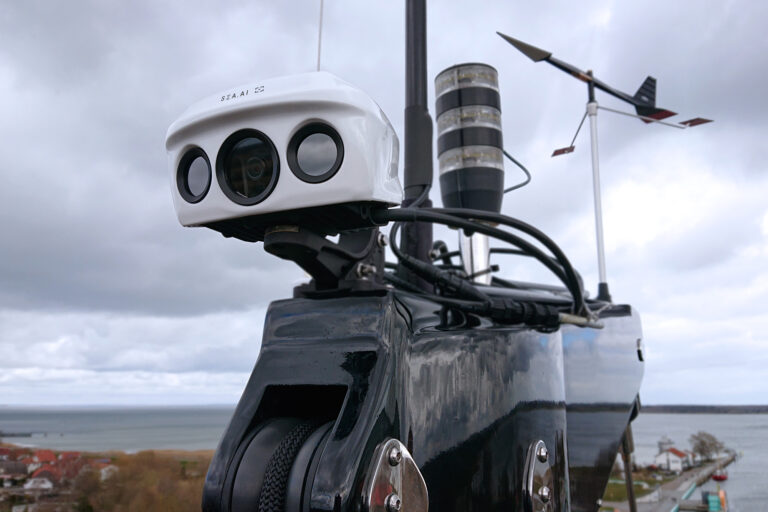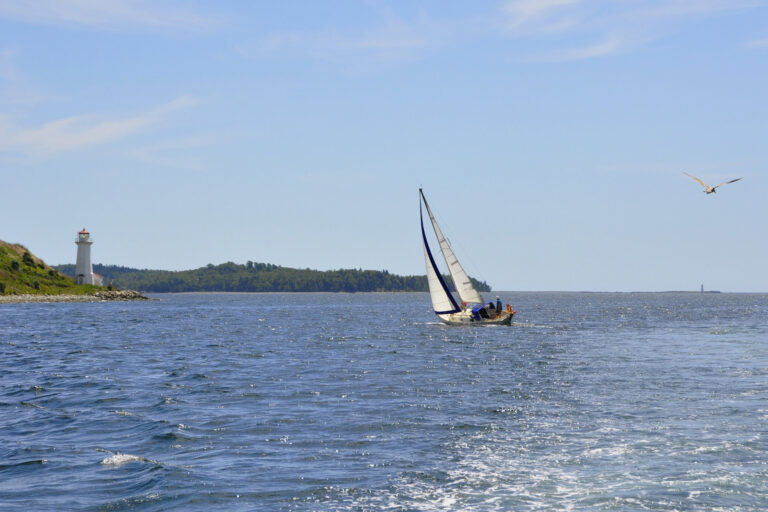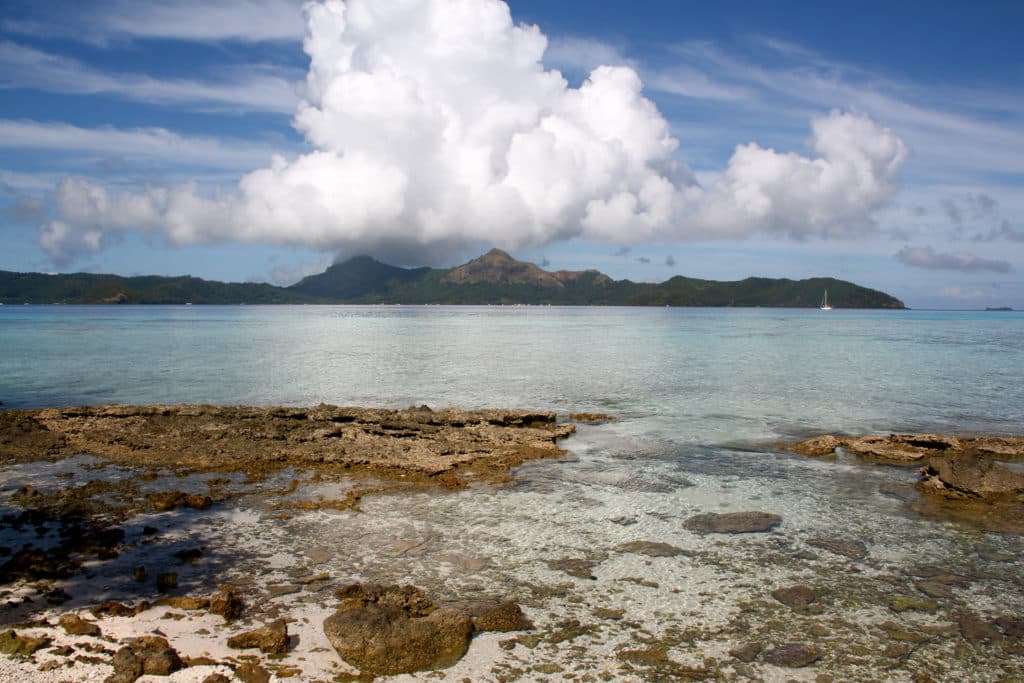
Shorter days, longer shadows, hiking and big, hearty meals: To me this is what fall is all about. Even in French Polynesia — or at least in the southern Gambier Archipelago, arguably the most remote of French Polynesia’s five major island groups. The Gambiers are where I first experienced the onset of a subtropical winter. We’d arrived from the relatively touristic Galápagos Islands on the equator, where the sun rises and sets at the same time all year, and seasonal changes are measured in rainfall and swell rather than daylight hours and temperature. Suddenly (well, 18 days and 2,700 nautical miles later) we were in a far-flung archipelago with a dry climate, dreamy 5 o’clock shadows, cool, clear water, no hotel in sight, and French baguettes baked daily. Heaven.
In the main village of Rikitea, Toyota Hilux trucks passed us by occasionally, women with flowers behind their ears smiling and waving, or men flashing the hang-loose sign out the window. Black-pearl farming is the main industry in the Gambiers, and the region’s pearls have a reputation for being the best in French Polynesia. It’s a lucrative business. Despite the fact that many of their necessities arrive only when the supply ship turns up, the people of the Gambiers have an independent spirit and a quiet pride in their islands. Compared with the three other island groups I’ve visited in French Polynesia (all but the Marquesas), the Gambier Archipelago most distinctly felt like it is its own nation, a regional introvert sitting quietly and happily by itself over in the corner.
There were quiet trails to hike, motus to visit. We met locals who’d never been on an airplane and foreigners who’d come years ago and never left. We traded fish we caught for fresh fruits and vegetables. Someone told us about a man who’d gotten into trouble for possession of marijuana back in the ’70s. He was given the choice of either going to jail in Tahiti or being banished to a stunning but lonely island at the edge of the archipelago. Not surprisingly, he chose the latter. His son now makes pizzas every Friday night in Rikitea. One evening we gathered with the people of the village at the large, open-air gymnasium to watch boys and girls perform traditional dances in grass skirts and crowns made of waxy green foliage. Cellphone cameras flashed around us as the drumming thundered into the darkness beyond.
And the steak frites! OK, I admit they weren’t the best I’ve ever had. But I’ll always remember sitting in those plastic chairs surrounded by hibiscus trees and the scent of tiare flowers, eating lunch in the early-afternoon sunshine. Locals would stop in for casse-croute sandwiches to go, greeting each other with a kiss on each cheek. There would be a crew of dogs timidly inching nearer, hoping for a couple of my frites to find their way to the ground. It was hard to believe I was so far from home. To me, this Polynesian outpost was paradise.
—Kate MacBain





